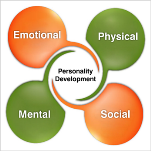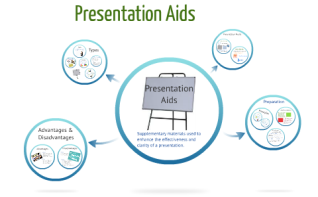Unit - 4
Communication and Technical Writing
Q1) What are project proposals?
A1) Project proposals - write a project proposal helps you communicate your project's value to your clients, investors or an employer. This skill is essential for getting your project approved and funded. When writing a project proposal, you can follow some steps to make sure you write an effective one.
Project proposals are documents that tell stakeholders why your project ideas should be executed. Reading about your ideas in a well-written document should convince stakeholders to support them. You may use project proposals for the following purposes:
Q2) Write short notes on Brochures, Newsletters and Technical articles.
A2) Brochures - A brochure is an informative paper document (often also used for advertising) that can be folded into a template, pamphlet, or leaflet. A brochure can also be a set of related unfolded papers put into a pocket folder or packet. Brochures are promotional documents, primarily used to introduce a company, organization, products or services and inform prospective customers or members of the public of the benefits.
Newsletters – is a written report, issued periodically, typically by a business, institution, or other organization, that presents information and news to people with a specific interest in the organization or subject. It is a newsletter is a printed or electronic report containing news concerning of the activities of a business or an organization that is sent to its members, customers, employees or other subscribers.
Technical articles - It is a written composition treating scientific or a technical subject distinctly. It is a systematic account of the result of some investigation, research, fieldwork and other activities.
It explores one area of interest and presents an objective analysis and interpretation of facts, findings, inferences, suggestions, recommendations and suggestions and conclusions.
Q3) Explain in short, the function of Manuals, Official Notes, Business Letters.
A3) Manuals - is a booklet or book, usually accompanying an appliance, device, computer game or vehicle, which contains written guidelines informing how to use it.
Official notes - An official letter is a formal letter written by one Official to another Official or to the government, semi-govt, Autonomous, Semi-Autonomous bodies or private organization. An Official letter maybe written by an Official to a non-official, from non- Official to an Official regarding any Official affair. In an Official letter, the designation with the name of the Office of the writer is used in the heading. In our country, Official letter are generally written their person and Govt. Offices
Business letters- A business letter is a letter from one company to another, or between such organizations and their customers, clients, or other external parties. The overall style of letter depends on the relationship between the parties concerned. A Business Letter is type of letter which serves as a means of communication written for various commercial purposes.
Q4) Write short notes on Progress reports, Minutes of meeting and Event reports.
A4) Progress reports- is an assessment that takes place during a project or process, that conveys details such as what sub-goals have been accomplished, what resources have been expended, what problems have been encountered, and whether the project or process is expected to be completed on time and within budget. Progress reports are used by management to determine whether changes are necessary to an ongoing effort.
Minutes of meetings- Also known as protocol or note, minutes are the live written record of a meeting. They include the list of attendees, issues raised, related responses, and final decisions taken to address the issues. Their purpose is to record what actions have been assigned to whom, along with the achievements and the deadlines.
Event report- Event reporting involves producing a report after an event has concluded in order to assess whether the objectives of the event were met. Event reports are sent to the sponsors of the event and should be tailored towards the needs and interests of the sponsor.
A post-event report pulls together relevant data, statistics and information that has been gathered in the lead up to, during and after an event.
Q5) What is meant by report writing?
A5) Report writing is a formal style of writing elaborately on a topic. The tone of a report is always formal. The audience it is meant for is always thought-out section. For example – report writing about a school event, report writing about a business case, etc. Today we shall learn about the essential elements of Report Writing.
Essentially, a report is a short, sharp, concise document which is written for a particular purpose and audience. It generally sets outs and analyses a situation or problem, often making recommendations for future action. It is a factual paper, and needs to be clear and well-structured.
Reports may contain some or all of the following elements:
Q6) What is meant by personality development? What are its benefits?
A6) Personality development - is the relatively enduring pattern of the thoughts, feelings, and behaviours that distinguish individuals from each other. The dominant viewpoint in personality psychology indicates that personality emerges early and continues to develop across one's lifespan. Adult personality traits are believed to have a basis in infant temperament, meaning that individual differences in disposition and behaviour appear early in life, potentially before language of conscious self-representation develop.

Benefits of personality development include the following keys:
Q7) What are some commonly used presentational aids?
Presentation aids are the resources beyond the speech itself that a speaker uses to enhance the message conveyed to the audience. The type of presentation aids that speaker most typically make use of are visual aids: pictures, diagrams, charts and graphs, maps, and the like. Audible aids include musical excerpts, audio speech excerpts, and sound effects. A speaker may also use fragrance samples or food samples as olfactory (sense of smell) or gustatory (sense of taste) aids.

Presentations can be enhanced by the effective use of visual aids. These include handouts, overhead transparencies, drawings on the whiteboard, PowerPoint slides, and many other types of props. Once you have chosen a topic, consider how you are going to show your audience what you are talking about. Visuals can provide a reference, illustration, or image to help the audience to understand and remember your point.
Q8) Write short notes on interviews and graphic presentation.
A8) Interview-An interview is a formal meeting at which someone is asked questions in order to find out if they are suitable for a job or a course of study. If you are interviewed for a particular job or course of study, someone asks you questions about yourself to find out if you are suitable for it.
It is a face-to-face interaction between interviewee and interviewer. If handled carefully, it can be a powerful technique in having accurate information of the interviewee otherwise unavailable. At the same time, if the interview is not handled carefully, it can be a source of bias, restricting or distorting the flow of communication.
Graphics presentation- Business graphics, charts and diagrams used in a presentation. Presentation graphics software provides predefined backgrounds and sample page layouts to assist in the creation of computer-driven slide shows, which, in combination with a data projector, made the 35mm slide presentation obsolete. Navigation from page to page (slide to slide) can be done manually or automatically every so many seconds. The most popular presentation software is Microsoft PowerPoint.
Q9) What is an oral presentation? Describe one type of oral presentation in detail (Public speaking).
A9) Oral; Presentation- An oral presentation simply involves explaining something to an audience. In the classroom, teachers grade these oral presentations based on the quality of the information presented as well as the method used in presenting it. An oral presentation is similar to giving a speech but is usually not just a person behind a lectern. Visual aids and teaching tools are used to further enhance the spoken words.
An oral presentation can be given as an individual or as part of a group. It also might add components of technology, such as a slide show, video clip or audio recording. An oral presentation is most often assigned as part of class coursework but can have other purposes as a teaching tool. A teacher might assign students an oral presentation on a particular topic or set of topics that requires them to learn more about the subject. The presenting students then take on a teaching role in sharing that new information to the class through their presentation.
Public Speaking- is the process or act of performing a speech to a live audience. Public speaking is commonly understood as formal, face-to-face, speaking of a single person to a group of listeners. Public speaking was considered to be a part of the art of persuasion. Public speaking was developed in Rome and Greece. Prominent thinkers from these lands influenced the development and evolutionary history of public speaking. Currently, technology continues to transform the art of public speaking through newly available technology such as videoconferencing, multimedia presentations, and other non-traditional forms.
A public speaking presentation is different from an online presentation because the online presentation may be viewed and/or listened to at the viewer's convenience, while a public speech is typically limited to a specific time or place. Online presentations are often comprised of slideshows or pre-recorded videos of a speaker.
Q10) What are group discussions? Discuss its types.
A10) Group Discussion- "Group" is a collection of individuals who have regular contact and frequent interaction and who work together to achieve a common set of goals. "Discussion" is the process whereby two or more people exchange information or ideas in a face-to-face situation to achieve a goal. The goal, or end product, maybe increased knowledge, agreement leading to action, disagreement leading to competition.
Most Group Discussions can be divided into 3 kinds:
A) Topical Group Discussions, which are based on current affairs or ‘static’ matters – for example, a GD on the topic of the recent demonetization of Rs 500 and Rs 1000 notes would be the former, whereas a GD on whether India should adopt a presidential model of democracy would be the latter, as it has no limitation of a time frame.
B) Case-studies, which present the group with a complex business situation that requires a decision to be made. Such cases usually have multiple problems embedded in the given situation, and both the individual participants and the group are required to analyses the situation, identify the problems, and suggest a way out.
C) Abstract Group Discussions, which are called so because they offer us no definite framework of the topic, and hence no definite direction to take in the discussion. Instead, the participants are required to interpret the topic in their own ways and demonstrate innovative thinking in doing so.